Museum
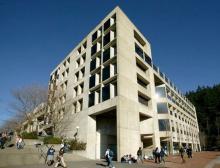
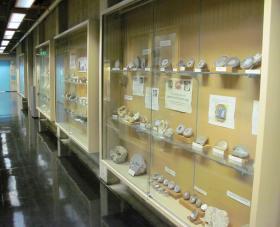
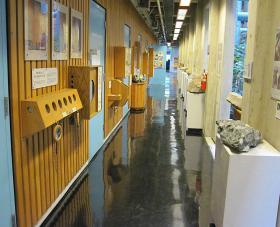
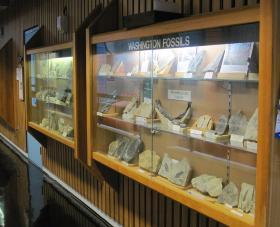
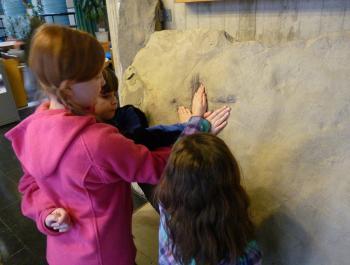

Want to look at (and touch) tracks left by birds and animals that roamed our region in ancient times? See minerals from classic Washington localities, and diverse fossil exhibits? The Geology Department is the home to one of the largest display collections of minerals, rocks, and fossils in the region. Exhibits feature specimens from the Pacific Northwest but also include materials from around the world.
The Geology Museum includes many examples of fossil footprints, including tracks of the giant groundbird, Diatryma, which was discovered in the Mount Baker foothills in 2009.
Displays are located in the corridors of the first three floors of the Environmental Studies Building, and visitors are always welcome!
All photos courtesy of George Mustoe - Datryma Tracks with Children courtesy of Dave Tucker
Fees
There are no admissions fees!
Building Hours
When school is in session, the building is open from:
7am-9:30pm weekdays
7am-6pm Saturdays
7:30am-9:30pm Sundays
If you come while WWU is in session please keep noise to a minimum.
If you come during intersession please check the building hours website.
We ask that large groups call us before coming to visit 360-650-3582.
Parking
Parking on campus is limited especially on weekdays, and permits are required for parking in all lots. Some parking lots are available for no cost after 4:30pm and on weekends. Please see the Visitor Parking webpage for more details. Accessible parking for persons with disabilities is always available.
Visitor parking permits can be purchased via the ParkMobile app or PayStations depending on the lot. The closest parking to the Environmental Studies Building is 17G or 19G. Although please note that Lot 17G is currently unavailable due to construction on the Kaiser Borsari Hall.